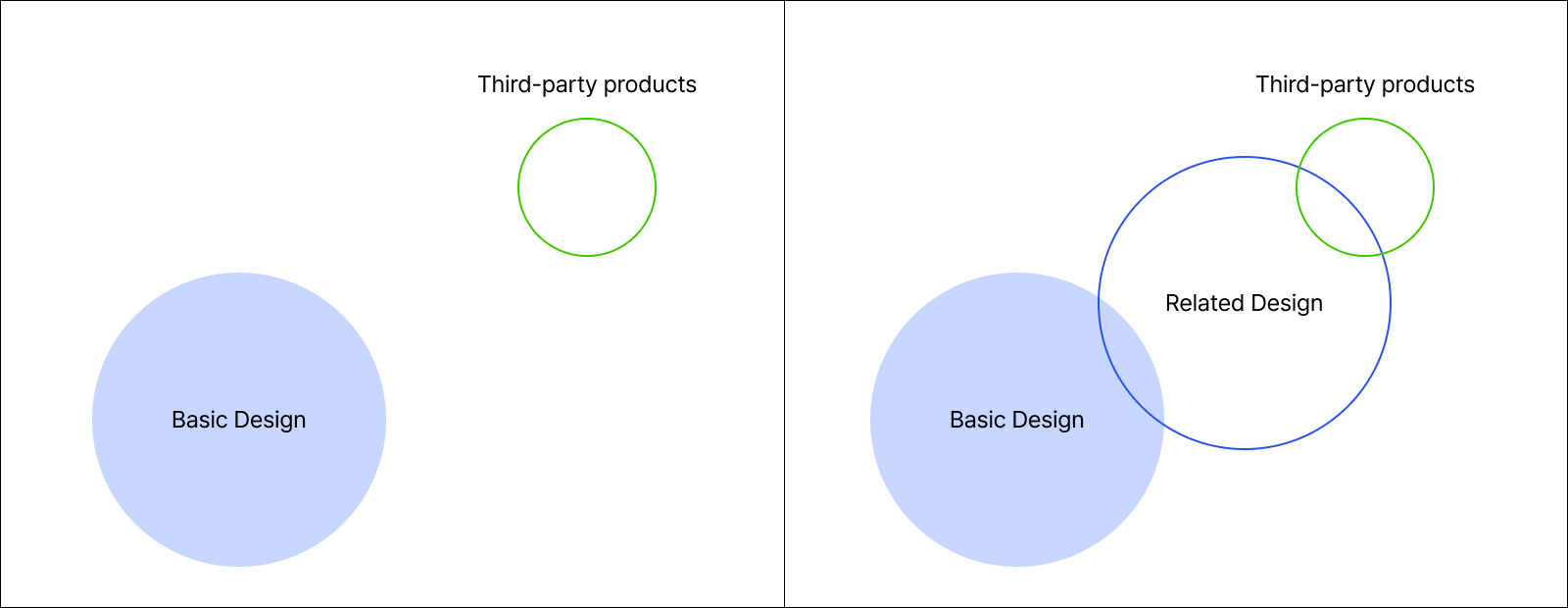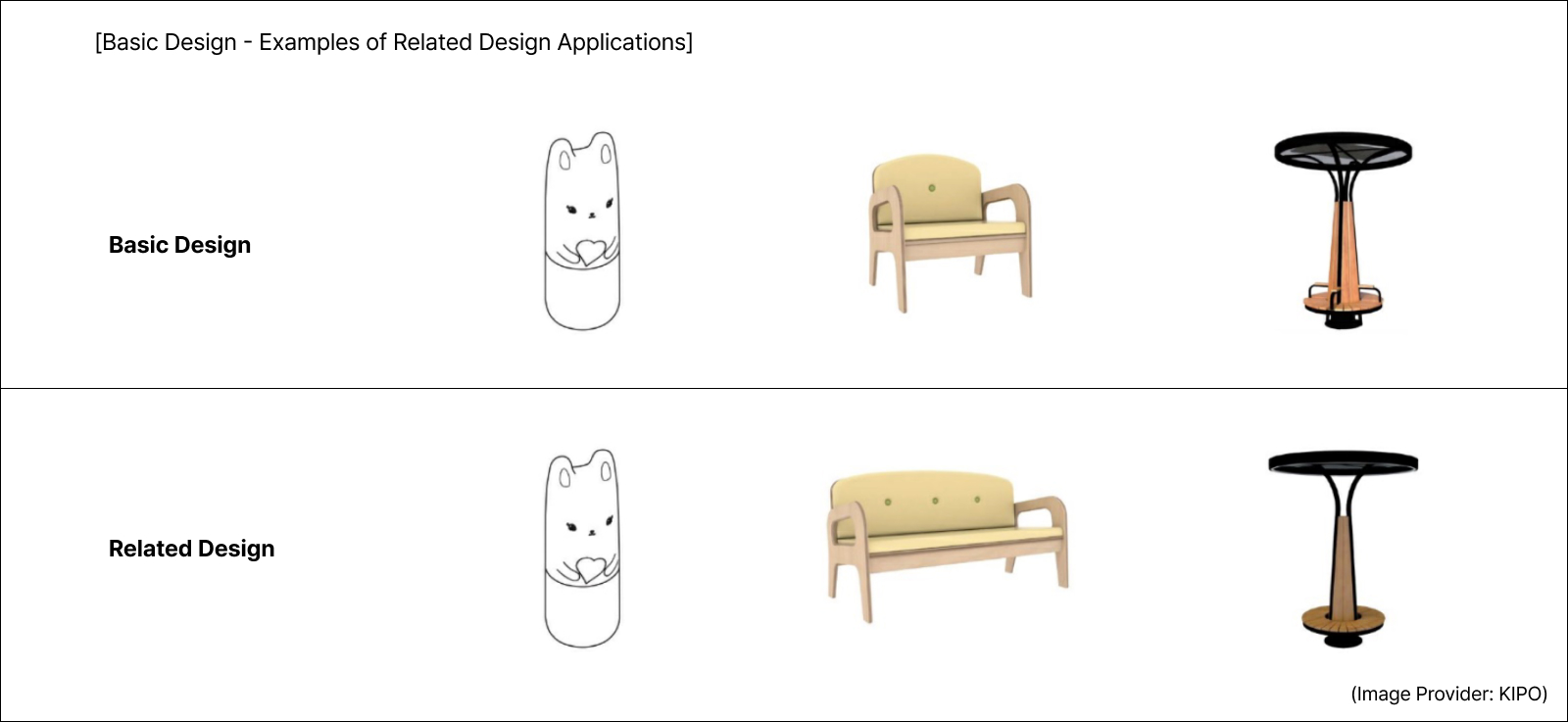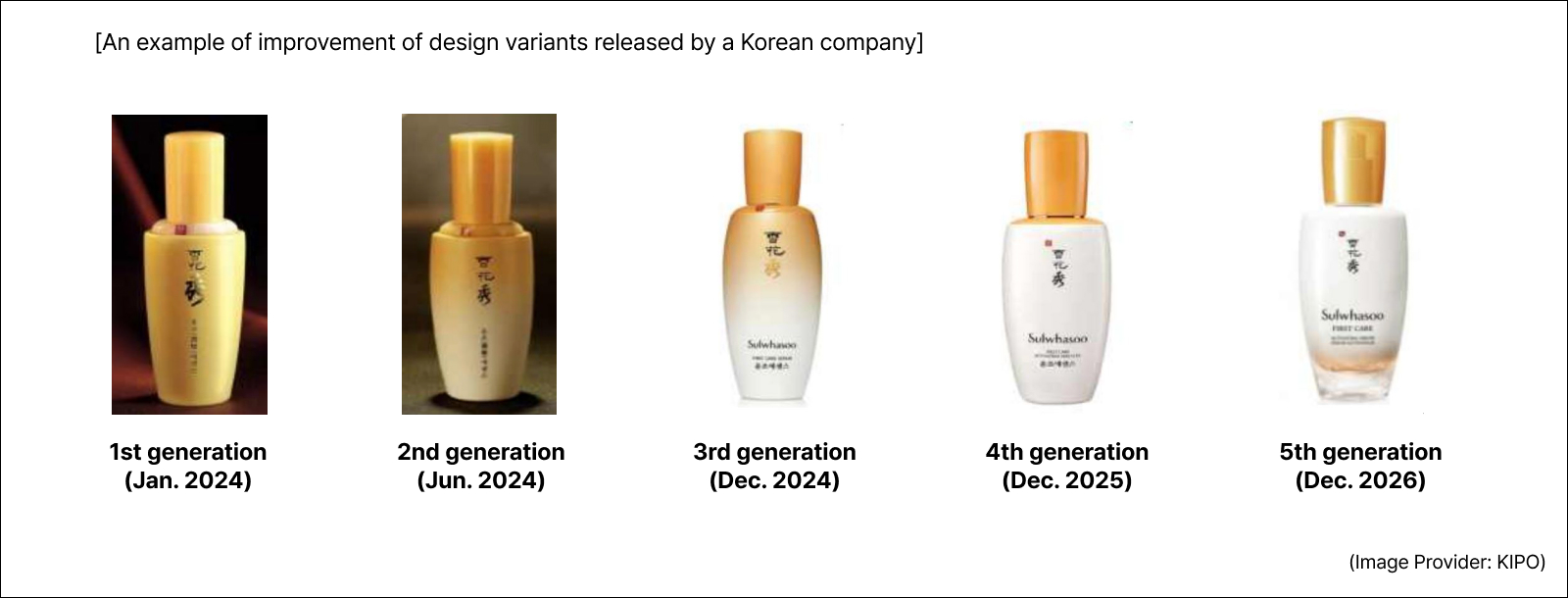
Search
Professionals

23-08-28
Amendments to the Design Protection Act was promulgated on June 20, 2023, and will take effect on December 21, 2023, as discussed below.
(1) Extension of the period for filing a related design application
The period for filing a related design, which was previously limited to one year from the filing date of a basic design application, was extended to three years. This amendment aims to enhance corporate design competitiveness through appropriate protection of subsequent designs.

After the initial creation of a design, it is commonplace for subsequent modifications to take place as seen in the examples below. These modifications can be safeguarded by filing them as a “related design” application, effectively broadening the scope of rights (similar scope) of a basic design as shown in the diagrams above. While a related design has distinct rights from a basic design, the protection period aligns with the expiry period of the basic design.

Below is an illustration of a design variation released by a Korean company:
Before the amendment, after the 1st generation design “ ” was released, it was possible to secure its related designs
only up to 3rd generation design “
” was released, it was possible to secure its related designs
only up to 3rd generation design “ ” which was filed within one year from the 1st generation
design.
” which was filed within one year from the 1st generation
design.
After the amendment, however, it will be possible to secure related
designs up to the 5th generation design “ “ within three years from the filing date of 1st generation
design ”
“ within three years from the filing date of 1st generation
design ” ” Therefore, if the design of a released product gets a
positive response within its market and the three-year period since the filing
of the basic design application has not lapsed, filing a related design
application could prove highly beneficial.
” Therefore, if the design of a released product gets a
positive response within its market and the three-year period since the filing
of the basic design application has not lapsed, filing a related design
application could prove highly beneficial.

(2) Relaxation of time limit for claiming an exception to the loss of novelty
Claiming for an exception to the loss of novelty exceptionally allows for registration of designs that have not passed 12 months from publication. The current amendments removed a procedural clause governing exceptions to the loss of novelty and the time limit for submitting the relevant documents (paragraph 2 of Article 36). This modification allows for the assertion of an exception to the loss of novelty at any time without any temporal constraints.
Prior to the amendments, the failure to proactively assert the loss of novelty for a design disclosed before filing an application often resulted in unfavorable judgment for design right holders. These judgements could arise in the disputes, such as infringement and invalidation actions, based on evidence disclosed prior to application. However, after the amendments, if the application was filed within 12 months from the time the design was disclosed, even if the opposing party presents evidence that does not claim an exception to the loss of novelty in infringement/invalidation proceedings, a design right holder retains the prerogative to assert this exception at any time. This modification proves beneficial for design right holders, strengthening their capacity to safeguard their rights.
<The possible period for claiming an exception to the loss of novelty>
|
Before Amendments |
After Amendments |
|
l When a design application is filed l When a design registration is decided l When a response to an opposition is filed l When a response to an invalidation action is filed |
l At any time |
(3) Relaxation of requirements for claiming treaty priority
With the Amendments, the methods and procedures for claiming priority have been made more relaxed, enabling priority claims to be made within two months after the expiration date if the treaty priority period were not met due to a justifiable reason. In addition, those who have already claimed priority under the treaty can now amend or add a priority claim within three months from the filing date.
According to the Guidelines for Restoration Examination, a “justifiable reason” is defined as a case wherein the specified period was overlooked despite reasonable diligence, such as instances involving unexpected illness or the sudden resignation of an agent. The determination of whether a reason qualifies as justifiable is undertaken on a case-by-case basis. This relaxation aligns the domestic design protection laws with the legal frameworks of major countries.
<Relaxation of Requirements for Claiming Treaty Priority>
|
Before Amendments |
After Amendments |
|
l Priority claim period: 6 months l Amendment is only possible l Deadline: 3 months |
l Priority claim period: 6 months (additional 2 months is extendible if a justifiable reason is acknowledged) l Amendments and additions are possible l Deadline: 6 months additional 2 months is extendible with a justifiable reason) |
These amendments is set to come into effect on December 21, 2023 and is intended to be applied to design applications filed subsequent to the amendments’ implementation. The revised regulations pertaining to the related designs will be applied to basic design applications filed after December 21, 2023.